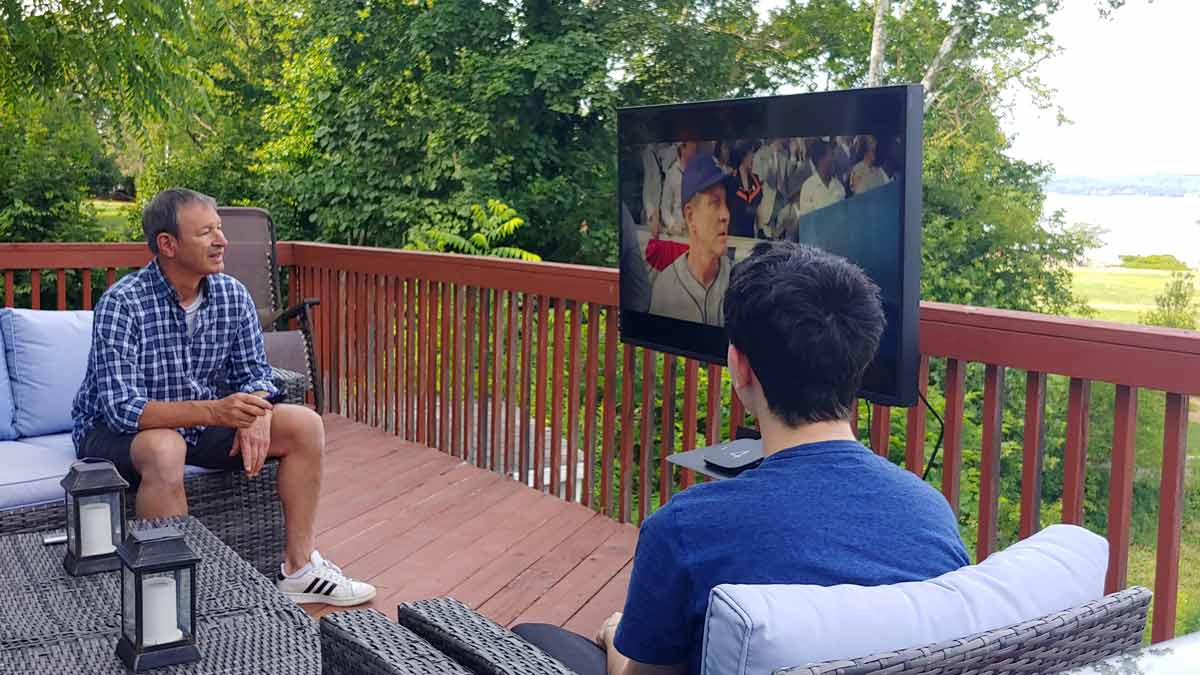
Outdoor TV Buying Guide – Consumer Reports
The moisture protection scale is similar, but it has nine levels, ranging from 1 (no protection) to 9 (completely submersible in water under pressure, for extended periods of time).
Obviously, a TV placed under a patio roof or veranda won’t require the same degree of protection as a TV placed out in the open, where it’s susceptible to heavy rainstorms, splashes from a pool, or sprays from a sprinkler system. The Samsung set has a moisture rating of 5, meaning it’s protected from water spray coming from any direction. The Furrion has a lower 4 rating, meaning it’s safe from water that comes from above, regardless of angle, as well as from condensation.
For most consumers, an outdoor TV should have 5 or 6 as its first number, and a 4 to 6 rating for moisture, unless you have a unique need for a TV that can be completely submerged.
Temperature and Amount of Sunlight
Your TV will also need to be able to safely operate within the upper and lower temperature limits of your region. Most outdoor TVs we’ve seen have fairly wide temperature ranges.
For example, Samsung says the set we bought can handle temperatures ranging from -22 to 122° F, while Furrion says its set can survive temperatures from 4 to 122° F. If you live in a more extreme weather region, you may need a set that can handle the outer limits of these ranges. Even if you won’t be outdoors in that type of weather, your TV will.
You’ll also need to match your outdoor TV to how much sunlight you expect it to receive. Both of the sets we tried are for “partial sun,” according to their manufacturers. That means they should have some degree of anti-glare protection, as well as sufficient display brightness for this type of viewing.
The expectation for these sets is that they’ll be placed in a shaded or covered area, such as under an eave, a patio roof, or a pergola, away from direct sunlight hitting the screen. “Full sun” models typically cost substantially more, so it’s worth trying to find a location that offers some shade.
But remember that, ultimately, these are also TVs, so factors like screen size, picture and sound quality, viewing angle, and whether it’s a smart TV will also matter. If you intend to stream movies and TV shows, you may want to get an outdoor router, or place a mesh router close to your viewing area.
Also, as we found out, most outdoor TVs don’t some with stands or mounts, so you’ll need to buy one separately. These TVs are considerably heavier than regular sets, so you’ll want to choose an outdoor-rated model that can support that heavier weight and stand up to the elements.
One last thing: To prolong the life of your set, it’s not a bad idea to get an outdoor TV cover that can add protection when the TV isn’t in use. It can help keep dust and debris—not to mention insects, birds, and small critters—out of the TV, especially in the winter. Be sure to get one that matches the size of your TV,
